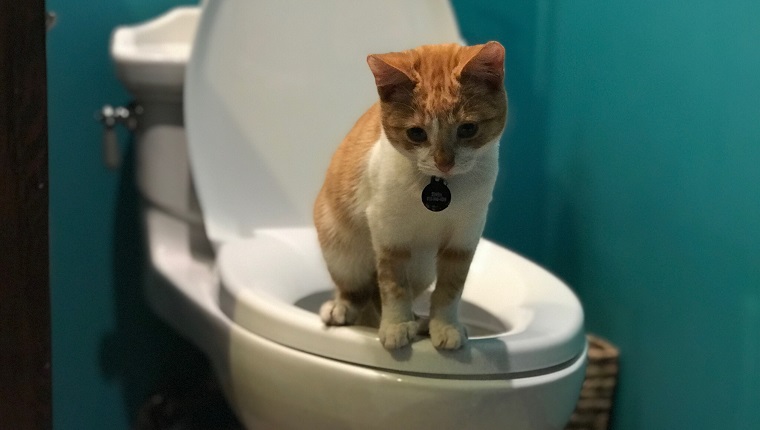Potential Risks of Flushing Cat Poop Down Your Toilet - Tips for Safer Handling
Potential Risks of Flushing Cat Poop Down Your Toilet - Tips for Safer Handling
Blog Article
Do you find yourself searching for resources about Can You Flush Cat Poo or Litter Down the Toilet??

Intro
As pet cat owners, it's necessary to be mindful of exactly how we take care of our feline pals' waste. While it might appear convenient to flush pet cat poop down the commode, this practice can have harmful consequences for both the atmosphere and human health.
Ecological Impact
Flushing pet cat poop introduces dangerous microorganisms and parasites right into the water system, presenting a significant danger to water communities. These pollutants can adversely influence aquatic life and compromise water high quality.
Health Risks
Along with environmental problems, flushing pet cat waste can additionally position wellness risks to human beings. Pet cat feces might include Toxoplasma gondii, a bloodsucker that can trigger toxoplasmosis-- a potentially severe illness, particularly for expectant females and people with weakened body immune systems.
Alternatives to Flushing
The good news is, there are much safer and more accountable ways to dispose of feline poop. Take into consideration the following options:
1. Scoop and Dispose in Trash
One of the most common technique of disposing of feline poop is to scoop it right into an eco-friendly bag and toss it in the garbage. Be sure to use a devoted trash inside story and take care of the waste without delay.
2. Usage Biodegradable Litter
Go with biodegradable feline litter made from products such as corn or wheat. These trashes are environmentally friendly and can be securely dealt with in the trash.
3. Hide in the Yard
If you have a lawn, think about burying cat waste in a designated area far from veggie gardens and water sources. Be sure to dig deep sufficient to stop contamination of groundwater.
4. Mount a Pet Waste Disposal System
Purchase a pet dog garbage disposal system particularly developed for feline waste. These systems use enzymes to break down the waste, reducing odor and environmental effect.
Verdict
Liable pet dog possession prolongs past giving food and shelter-- it likewise includes appropriate waste management. By avoiding purging feline poop down the bathroom and going with alternative disposal techniques, we can lessen our environmental footprint and secure human health and wellness.
Why Can’t I Flush Cat Poop?
It Spreads a Parasite
Cats are frequently infected with a parasite called toxoplasma gondii. The parasite causes an infection called toxoplasmosis. It is usually harmless to cats. The parasite only uses cat poop as a host for its eggs. Otherwise, the cat’s immune system usually keeps the infection at low enough levels to maintain its own health. But it does not stop the develop of eggs. These eggs are tiny and surprisingly tough. They may survive for a year before they begin to grow. But that’s the problem.
Our wastewater system is not designed to deal with toxoplasmosis eggs. Instead, most eggs will flush from your toilet into sewers and wastewater management plants. After the sewage is treated for many other harmful things in it, it is typically released into local rivers, lakes, or oceans. Here, the toxoplasmosis eggs can find new hosts, including starfish, crabs, otters, and many other wildlife. For many, this is a significant risk to their health. Toxoplasmosis can also end up infecting water sources that are important for agriculture, which means our deer, pigs, and sheep can get infected too.
Is There Risk to Humans?
There can be a risk to human life from flushing cat poop down the toilet. If you do so, the parasites from your cat’s poop can end up in shellfish, game animals, or livestock. If this meat is then served raw or undercooked, the people who eat it can get sick.
In fact, according to the CDC, 40 million people in the United States are infected with toxoplasma gondii. They get it from exposure to infected seafood, or from some kind of cat poop contamination, like drinking from a stream that is contaminated or touching anything that has come into contact with cat poop. That includes just cleaning a cat litter box.
Most people who get infected with these parasites will not develop any symptoms. However, for pregnant women or for those with compromised immune systems, the parasite can cause severe health problems.
How to Handle Cat Poop
The best way to handle cat poop is actually to clean the box more often. The eggs that the parasite sheds will not become active until one to five days after the cat poops. That means that if you clean daily, you’re much less likely to come into direct contact with infectious eggs.
That said, always dispose of cat poop in the garbage and not down the toilet. Wash your hands before and after you clean the litter box, and bring the bag of poop right outside to your garbage bins.
https://trenchlesssolutionsusa.com/why-cant-i-flush-cat-poop/

As a keen person who reads on Don’t flush cat feces down the toilet, I figured sharing that excerpt was important. Do you know someone else who is serious about the subject? Be sure promote it. I thank you for reading our article about Don’t flush cat feces down the toilet.
Click Here Report this page